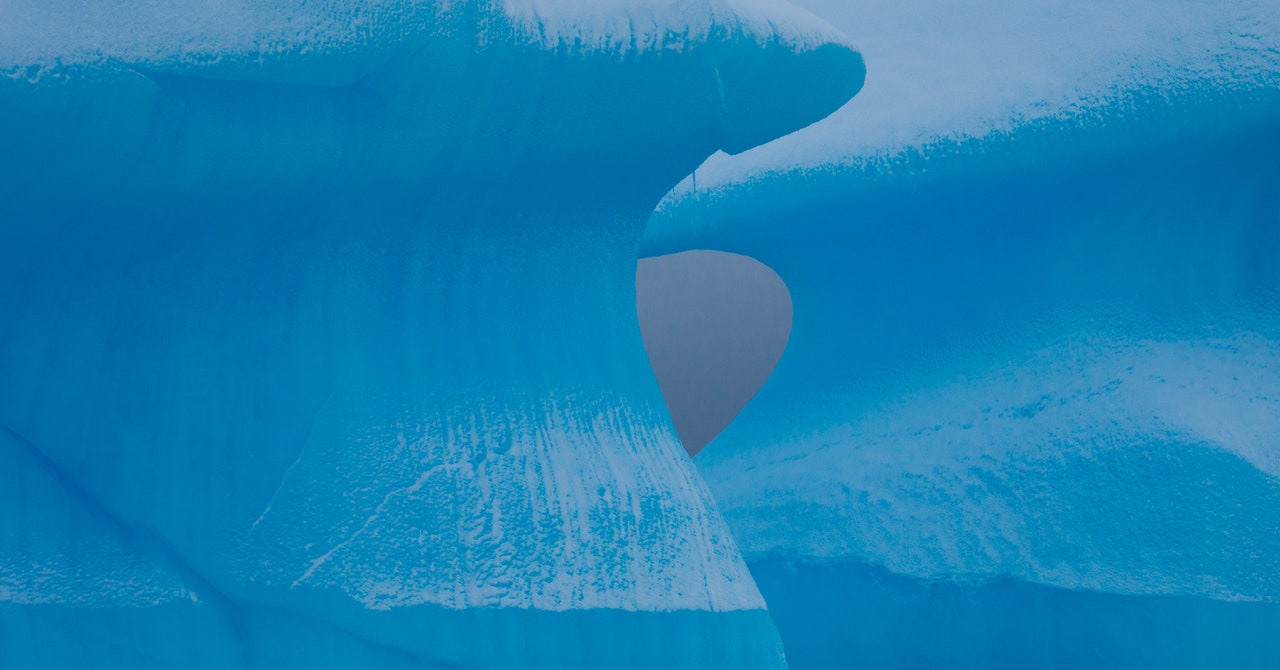
It’s not a tremendous amount of melt per square foot. But over an area that’s the size of two large European countries, that scales up. “What we concluded is the melting is really small—it’s like a millimeter per year,” says Siegert. “But the catchment is enormous, so you don’t need much melting. That all funnels together into this river, which is several hundred kilometers long, and it’s three times the rate of flow of the river Thames in London.”
That water is under extreme pressure, both because there’s a lot of ice pressing down from above and because there isn’t much room between the ice and the bedrock for the liquid to move around. “And because it’s under high pressure, it can act to lift the ice off its bed, which can reduce friction,” Siegert says. “And if you reduce that basal friction, the ice can flow much quicker than it would do otherwise.” Think of that ice like a puck sliding across an air hockey table, only instead of riding on air, the ice is riding on pressurized water.
This massive hidden river, says University of Waterloo glaciologist Christine Dow, lead author of the new paper, “can pump a huge volume of fresh water into the ocean.” And that could be bad news for the glacial ice sheet’s connection to the floating ice shelf. “Where the ice begins to float is the most sensitive region,” she continues. “So anything that is going to change where that grounding line rests is going to have significant control on how much sea level rise we have in the future.”
What’s holding the ice sheet back—and keeping sea levels from jumping many feet—is the ice shelf, which acts like a big, heavy cork to slow the flow of a glacier into the sea. But in Antarctica, these corks are fragmenting, as warming waters eat away at the underside of them. The ice shelf of Antarctica’s Thwaites Glacier (aka the Doomsday Glacier), for instance, could crumble in three to five years, recent research suggests. If we lost Thwaites entirely, it alone would contribute two feet to sea levels.
It’s not just Thwaites. Researchers are finding that many of Antarctica’s grounding lines are receding, like hairlines. Yet models that predict the future state of these glaciers assume that grounding lines are static. Scientists already know that those models are missing another key factor that may affect how well these lines can hold: an effect known as tidal pumping. When tides go in and out, they heave the ice shelf up and down, allowing warm seawater to rush inland and melt the underside of the ice. This new research now shows that pressurized meltwater is also coming from the other direction, flowing from inland to the grounding line.
“The problem is, if you have a lot of fresh water being pumped into the ocean, it buoyantly moves up toward the base of the ice, and it’s dragging warm ocean water up with it, melting that ice,” says Dow. “That causes that grounding line to retreat. And then all of the ice that was formerly grounded is now floating to instantly add to sea level rise and destabilize the whole system.” In other words, the ice doesn’t have to melt to raise water levels, because its massive bulk displaces liquid too.


